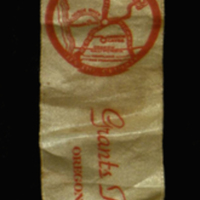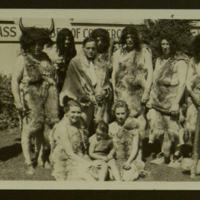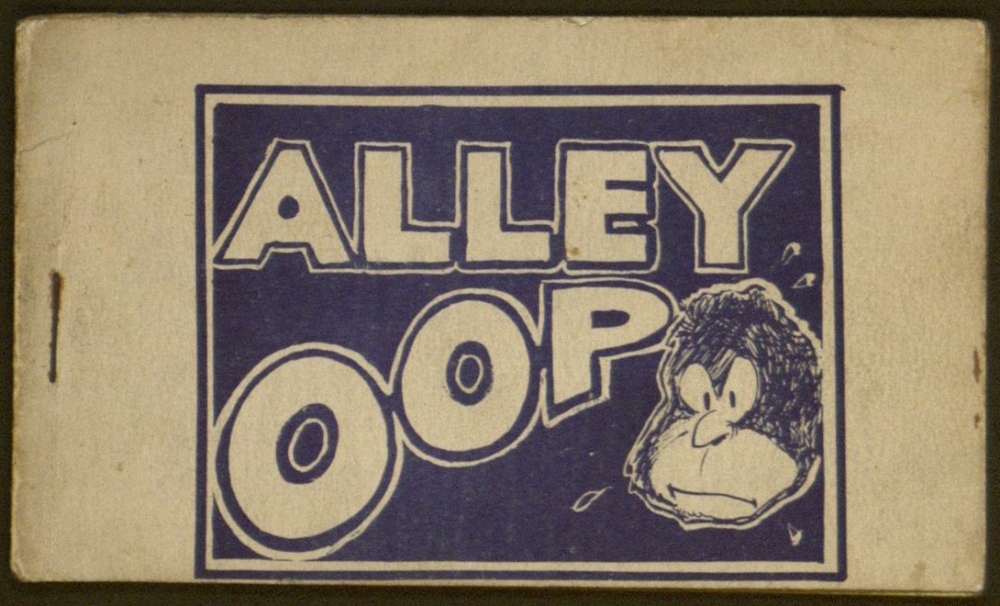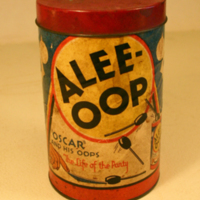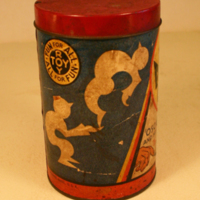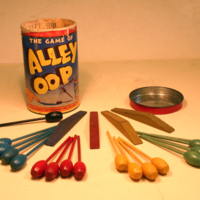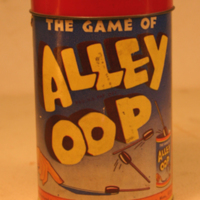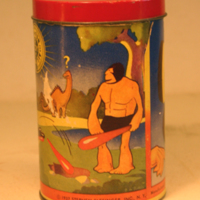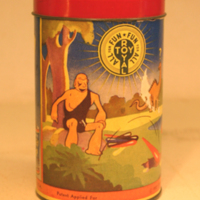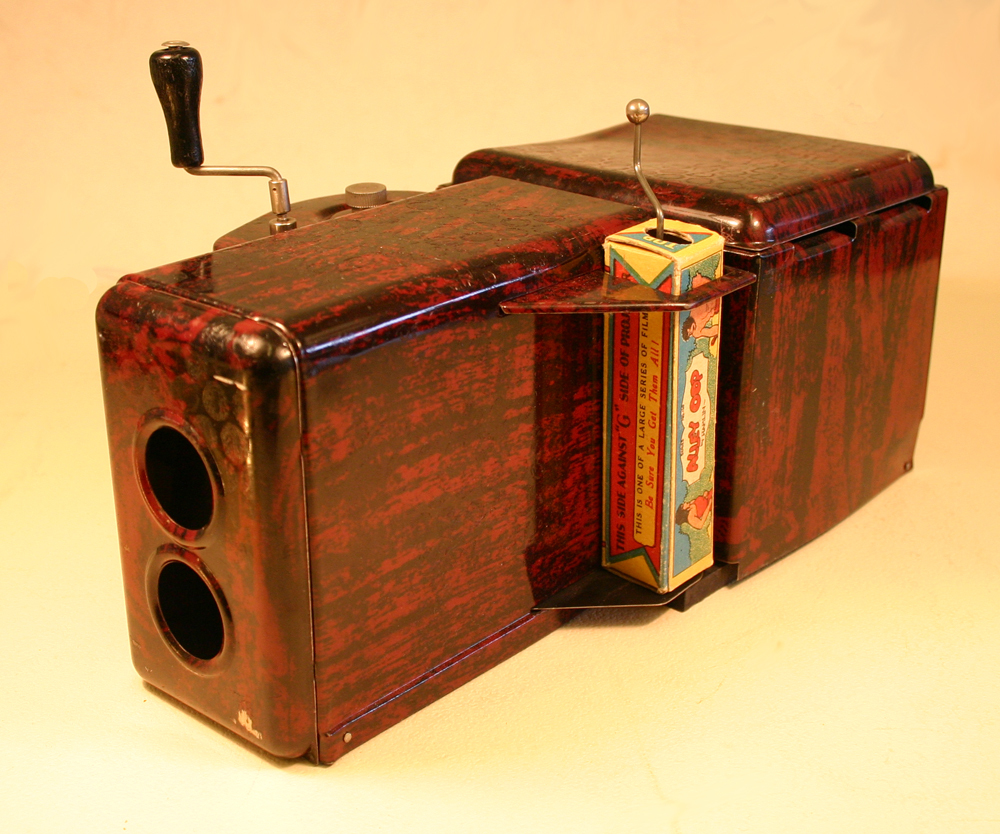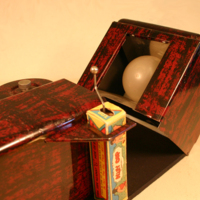Alley Oop
Alley Oop in Culture
Alley Oop's popularity is demonstrated in the numerous reprints, products, and imitations that have been created over the years. It was parodied many times in that great mocker of twentieth-century popular culture, Mad magazine. Jasper Johns' Alley Oop is a painting composed on top of a clipping of the Alley Oop Sunday strip from June 22, 1958. Alley has been an animated television show, a game, a figurine, and a Pez dispenser.
The 1930s
The Cavemen
In the summer of 1936, Dorothy and V.T. travelled to the Northwest, settling in the town of Wilderville, a small village of log cabins nine miles south of Grants Pass, Oregon. Here V.T. was given honorary membership in the Grants Pass Caveman Society, a civic society formed in 1922 to promote travel to the Oregon Caves National Monument. The Cavemen, a group of local businessmen dressed in animal skins and wielding clubs, would regularly "kidnap" dignitaries and celebrities travelling through the town. Hamlin's strip had already gained enough popularity for him to be considered as such. He drew some of the Cavemen into the strip in a storyline about the Ice Age.
Tijuana Bibles
The residents of Moo inspired a number of "Tijuana Bibles," erotic, underground, comic-strip parodies of popular figures. They are also known as "eight-pagers" because of their standard format of eight pages. Movie stars, politicians, folk heroes, and comic strip characters were all fodder for these illegal publications. The precise origin of the term "Tijuana Bible" is unknown, though some speculate it refers to Tijuana as a general source for illicit goods, though it is unlikely these publications actually came from Mexico.
According to one story, Al Capp, in the early days of his strip L'il Abner, was relieved when a Tijuana Bible version of his strip surfaced. Since his characters were popular enough to inspire an eight-pager, he knew he had finally made it as a comic strip artist.
Alley Oop the Game
In the mid 1930s, two nearly identical games were manufactured by the Royal Toy Company, Alee-Oop and The Game of Alley Oop. Alee-Oop was created first, but sales were much better once the game was officially tied with the strip and featured Alley, Foozy, and Dinny on the packaging. The concept is similar to the game tiddlywinks, with the players trying to flip game pieces into a container.
The Movie-Jecktor
The Movie-Jecktor Company of New York manufactured home movie projectors, as well and grammophone/projector combinations in the mid-1930s. They also created short films to be played in these projectors, with images printed on parchment paper, starring popular comic strips and animated characters, such as Mickey Mouse and Buck Rogers. This particular model worked with a lightbulb and a handcrank. The Movie-Jecktor Co. produced just one film starring Alley and Ooola.
